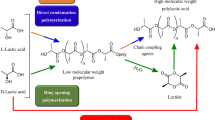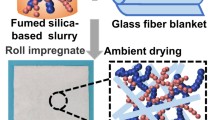Abstract
Fine polyacrylate particles are thought to be environmental plastisols for car industry. However, these particles are mainly dried through demulsification of the latexes, which is not reproducible and hard to be scaled up. In this work, a spray drying method had been applied to the plastisols-used acrylate latex. By adjusting the core/shell ratio, spray drying process of the latex was fully studied. Scanning electronic microscopy observation of the nanoparticles before and after spray drying indicated that the core–shell structures could be well preserved and particles were well separated by spray drying if the shell was thick enough. Otherwise, the particles fused into each other and core–shell structures were destroyed. Polyacrylate plastisols were developed using diisononylphthalate as a plasticizer, and plastigels were obtained after heat treatment of the sols. Results showed that the shell thickness also had a great influence on the storage stability of the plastisols and mechanical properties of the plastigels.
Graphical Abstract







Similar content being viewed by others
References
Arai Y, Saeki S, Mae S (2007) Acrylic-type polymer fine particles used for acrylic-type plastisol composition for motor vehicle component, synthetic leather and wallpaper, contain t-butyl methacrylate group, (meth)acrylate group of alcohol, and monomer group. JP2008231377-A, JP2008231377-A 02 Oct 2008 C08F-220/00 200876, p 12
Cui Y, Wang J, Liu W, Wang Y, Zhou M (2011) Characterization of Scandia doped pressed cathode fabricated by spray drying method. Appl Surf Sci 258(1):327–332
Fenollar O, Sanchez-Nacher L, Garcia-Sanoguera D, López J, Balart R (2009) The effect of the curing time and temperature on final properties of flexible PVC with an epoxidized fatty acid ester as natural-based plasticizer. J Mater Sci 44(14):3702–3711
Fox TG (1956) Influence of diluent and of copolymer composition on the glass temperature of a polymer system. Bull Am Phys Soc 1:123
Funke W (1996) Automotive paints and coatings: edited by Gordon Fettis, VCH Verlagsgesellschaft, Weinheim, Germany, 1995, 240 pp., DM 220. Prog Org Coat 28(2):150
Garcia JC, Marcilla A (1998) Rheological study of the influence of the plasticizer concentration in the gelation and fusion processes of PVC plastisols. Polymer 39(15):3507–3514
Jiménez A, Torre L, Kenny JM (2001) Thermal degradation of poly(vinyl chloride) plastisols based on low-migration polymeric plasticizers. Polym Degrad Stab 73(3):447–453
Kasai T, Tsuchihashi T (2011) Fine polymer particles for plastisol, process for producing the same, and halogen-free plastisol composition and article made with the same, European Patent, EP1217037
Kroushl P (2007) Resin selection for PVC applications. In: Grossman RF (ed) Handbook of vinyl formulating. Wiley, Hoboken, NJ, pp 13–56
Lee K, Gatensby R, McEvoy N, Hallam T, Duesberg GS (2013) High-performance sensors based on molybdenum disulfide thin films. Adv Mater 25(46):6699–6702
Masters K (1979) Spray drying handbook. Wiley, New York
Nakajima N, Daniels CA (1980) Plastisols of poly(vinyl chloride); particle size distribution, morphology, rheology, and mechanism of aging. J Appl Polym Sci 25(9):2019–2044
Nakajima N, Harrell ER (2001) Rheology of PVC plastisol: particle size distribution and viscoelastic properties. J Colloid Interface Sci 238(1):105–115
Nakajima N, Harrell ER (2002) Rheology of PVC plastisol—V: storage modulus and network formed by particle contact. J Colloid Interface Sci 254(2):362–366
Nakajima N, Ward DW, Collins EA (1979) Viscoelastic measurements of PVC plastisol during gelation and fusion. Polym Eng Sci 19(3):210–214
Nakajima N, Yavornitzky CM, Roche EJ, Harrell ER (1986) The glass transition and gelation of PVC resins in plastisol. J Appl Polym Sci 32(2):3749–3759
Nakajima N, Sadeghi MR, Kyu T (1990) Swelling of PVC particles during gelation and fusion of plastisols as observed with small-angle light scattering. J Appl Polym Sci 41(5–6):889–899
Overend AS, Padget JC (1994) Plastisol compositions. US Patent 5,324,762
Pei Y, Zhang X, Jiang Y, Huang H, Chen H (2011) Redispersibility of acrylate polymer powder and stability of its reconstituted latex. J Dispers Sci Technol 32(9):1279–1284
Persico P, Ambrogi V, Acierno D, Carfagna C (2009) Processability and mechanical properties of commercial PVC plastisols containing low-environmental-impact plasticizers. J Vinyl Addit Technol 15(3):139–146
Salonitis K, Pandremenos J, Paralikas J, Chryssolouris G (2010) Multifunctional materials: engineering applications and processing challenges. Int J Adv Manuf Technol 49(5–8):803–826
Shah AC, Poledna DJ (2003) Review of PVC dispersion and blending resin products. J Vinyl Addit Technol 9(3):146–154
Song XL, Cheng ZH, Chen Y, Xu YZ, Wang CP (2013) Preparation and property studies of core–shell structure polyacrylate microspheres for plastisol. Adv Mater Res 750–752:4
Taenghom T, Pan Q, Rempel G, Kiatkamjornwong S (2013) Synthesis and characterization of nano-sized poly[(butyl acrylate)-co-(methyl methacrylate)-co-(methacrylic acid)] latex via differential microemulsion polymerization. Colloid Polym Sci 291(6):1365–1374
Teng G, Soucek MD (2001) Synthesis and characterization of cycloaliphatic diepoxide crosslinkable core–shell latexes. Polymer 42(7):2849–2862
Wang G, Wang X, Jin R (2004) Preparation and properties of novel plastisols based on acrylic core–shell lattices. Colloid Polym Sci 283(1):98–106
Webster DC, Crain AL (2002) Synthesis of latexes containing diesters of 3-butene-1,2-diol. Prog Org Coat 45(1):43–48
Zhang H, Chen JF, Zhou HK, Wang GQ, Yun J (2002) Preparation of nano-sized precipitated calcium carbonate for PVC plastisol rheology modification. J Mater Sci Lett 21(16):1305–1306
Zhang CH, Huang LX, Wang CP, Mujumdar AS (2010) Experimental and numerical investigation of spray-drying parameters on the dried powder properties of Ginkgo biloba seeds. Dry Technol 28(3):380–388
Zou J, Su L, You F, Chen G, Guo S (2011) Dynamic rheological behavior and microcrystalline structure of dioctyl phthalate plasticized poly(vinyl chloride). J Appl Polym Sci 121(3):1725–1733
Acknowledgments
The authors gratefully acknowledge financial support from National Natural Science Foundation of China (Grant No. 51403003), Anhui Provincial Natural Science Foundation of Anhui Province (1508085QE105).
Author information
Authors and Affiliations
Corresponding authors
Electronic supplementary material
Below is the link to the electronic supplementary material.
Rights and permissions
About this article
Cite this article
Chen, P., Cheng, Z., Chu, F. et al. Fabrication of polyacrylate core–shell nanoparticles via spray drying method. J Nanopart Res 18, 124 (2016). https://doi.org/10.1007/s11051-016-3432-z
Received:
Accepted:
Published:
DOI: https://doi.org/10.1007/s11051-016-3432-z




